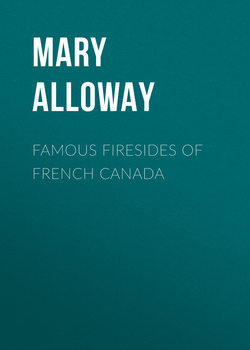Читать книгу Famous Firesides of French Canada - Alloway Mary Wilson - Страница 5
NOTRE-DAME-DE-LA-VICTOIRE
ОглавлениеA few rods to the west of the Château, through a vaulted archway leading from the street, in the shadow of the peaceful convent buildings is a little chapel called Notre-Dame-de-la-Victoire. The swallows twittering under its broken eaves are now the only sign of life; and its rotting timbers and threshold, forgotten by the world, give no suggestion of the martial incident to which it owes its existence. While the American Colonies were still English, the British Ensign floated over Boston town, and good Queen Anne was prayed for in Puritan pulpits, an expedition was fitted out under Sir Hovenden Walker to drive the French out of Canada. In the previous year, 1710, the Legislature of New York had taken steps to lay before the Queen the alarming progress of Gallic domination in America, saying: —
"It is well known that the French can go by water from Quebec to Montreal; from thence they can do the like through the rivers and lakes, at the risk of all your Majesty's plantations on this Continent, as far as Carolina."
In the command of Walker were several companies of regulars draughted from the great Duke of Marlborough's Army. While he was leading it from victory to victory for the glory of his King, his wife, the famous Sarah Jennings, was making a conquest at home of the affections of the simple-minded and susceptible Queen. It is remarkable that the coronet of this ambitious woman should now rest on the brow of an American girl, and that a daughter of New York should reign at Blenheim Castle. At that period France possessed the two great valleys of North America, the Mississippi and the St. Lawrence; to capture the latter was the aim of the expedition.
As the hostile fleet sailed up the St. Lawrence, a storm of great severity burst upon the invaders. Eight of the transports were recked on the reefs, and in the dawn of the midsummer morning the bodies of a thousand red-coated soldiers were strewn on the sands of Isle-aux-Œufs. It has been said that an old sea-dog, Jean Paradis, refused to act as pilot, and in a fog allowed them to run straight on to death; and also that among those who perished was one of the court beauties who had eloped with Sir Hovenden.
The disabled vessels retreated before the artillery of the elements, and left Bourbon's Lilied Blue to wave for half a century longer over Fort St. Louis. This bloodless victory for the French was attributed by them to the intervention of the Virgin, in gratitude for which this chapel was vowed and built, as was also another on the market place, Lower Town, Quebec. The miraculous feature of the defeated invasion was considered certain from the fact that a recluse in the convent near the chapel, and who was remarkable for her piety, had embroidered a prayer to the Virgin on the flag which the Baron de Longueuil had borne from Montreal in command of a detachment of troops.
Some of the original interior fittings of the chapel still exist, but the bell which chimed its first call to vespers, when the great city was a quiet, frontier hamlet, has long been silent. It is to be regretted that from its historical character it has not been preserved from decay, but looks as time-worn and mouldering as does the rusty cannon in the hall of the Château, which was one of the guns of the ill-fated fleet, and over which the river had flowed for almost two hundred years. Seven of England's sovereigns had lived, reigned and died, and in France the Royal house had fallen in the deluge of blood that flowed around the guillotine. Quebec had changed flags – the Tri-color had been unfurled over the Hôtel-de-Ville at Paris, and the Stars and Stripes over the new-born nation.
The thrones of Europe had tottered at the word of the Corsican boy, – he had played with crowns as with golden baubles, and had gone from the imperial purple to the mist-shrouded rocks of St. Helena. Eugenie, the Beautiful, had ruled the world by her grace, and fled from the throne of the haughty Louis to a loveless exile – while the old gun, with its charge rusting in its mouth, lay in silence under the passing keels of a million craft.
